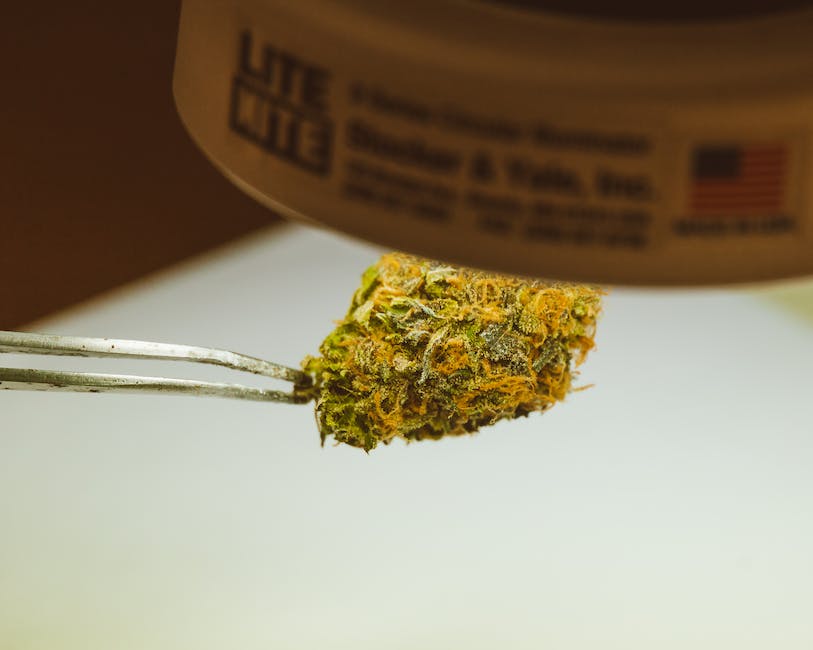California has been a cultural epicenter for cannabis for decades, and it’s now one of the most progressively regulated states for the cannabis industry. As cannabis becomes more readily available and socially accepted, it’s important for the business community to understand this changing industry and how it affects them. Whether you’re an entrepreneur hoping to break into the cannabis market or simply curious about how legal cannabis is impacting the economy, it’s essential to explore the many facets of California’s cannabis industry. This blog post will delve into the diverse and dynamic world of California’s cannabis market, including its evolving history, current regulations, and promising future potential.
Navigating the various product types (flower, edibles, concentrates)

When it comes to exploring the cannabis market in California, it’s essential to understand the various product types available. The three primary categories of cannabis products are flower, edibles, and concentrates.
Flower is the dried, cured, and trimmed buds of the cannabis plant. It’s the most traditional and straightforward method of consuming cannabis, usually smoked in a joint or pipe. Flower products offer a range of potencies, with strains ranging from high-THC to high-CBD, and everything in-between.
Edibles are a popular alternative to smoking for those who prefer not to inhale. They come in many different forms, including gummies, chocolates, and baked goods infused with cannabis. Edibles can be more potent than flower products, with effects that can take longer to onset and last longer.
Concentrates are highly potent cannabis extracts that come in a wide range of forms, including shatter, wax, and oil. These products require specialized equipment, such as vaporizers or dab rigs, to consume. Concentrates can be incredibly potent, with THC levels exceeding 80%.
Navigating the different product types can seem overwhelming at first but taking the time to explore what works best for you can lead to a more enjoyable and personalized cannabis experience. It’s essential to start small, take it slow, and always purchase from a reputable and licensed dispensary.
Exploring the different strains of cannabis and their effects

California has become an epicenter for cannabis enthusiasts, boasting a diverse and dynamic market of strains. Each strain has its unique properties and effects, depending on the level of THC, CBD, and other cannabinoids. Some are known for their energizing effects, while others are associated with relaxation and even sedation. Indica strains, for instance, contain a higher level of CBD, which is why they are more favored for relaxation and nighttime use, while Sativa strains have a higher THC level, perfect for daytime use and boosting creativity. Hybrid strains combine the best of both worlds, offering users varying degrees of relaxation and energy boost depending on the blend of Sativa and Indica. With so many strains to choose from, it is essential to understand these variations and experiment with them to find one that is most suitable for a particular need. Hence, going to a dispensary and speaking with a budtender is a great way to learn about different strains and what they have to offer.
Evaluating the quality of cannabis products (including testing and labeling standards)

When it comes to evaluating the quality of cannabis products, there are a few important factors to consider. First and foremost, it’s essential to look for products that have been tested by a reputable third-party lab. These tests should check for the potency of the product, as well as the presence of any contaminants like pesticides or heavy metals.
In California, cannabis products are required by law to be tested for potency and contaminants before they can be sold to consumers. This means that products that are available for sale should have a label that indicates the results of these tests.
When evaluating labeling standards, look for products that provide clear information about the strain, the THC and CBD content, and any other relevant information. This can help you make an informed decision about the product and ensure that you’re getting what you pay for.
Overall, it’s essential to do your research and choose products that meet your standards for quality and safety. By evaluating testing and labeling standards, you can feel confident in the products you choose and enjoy the benefits of California’s diverse and dynamic cannabis market.
Finding reputable dispensaries and delivery services

Finding reputable dispensaries and delivery services is important when exploring the cannabis market in California. With so many options available, it can be overwhelming to know where to start. One way to find reputable sources is to do research online and read reviews from other customers. Another option is to seek recommendations from friends or acquaintances who have experience purchasing cannabis products. It’s also important to consider factors such as location, pricing, and selection when choosing a dispensary or delivery service. By taking the time to find reputable sources, customers can ensure they are getting high-quality products from reliable businesses.
Understanding the pricing and taxation of cannabis products in California

Understanding the pricing and taxation of cannabis products in California can be a confusing task for new consumers and business owners alike. The price of cannabis products can vary widely depending on factors such as potency, strain, and supply and demand. Additionally, the taxation of cannabis products in California is complex, with different tax rates depending on the type of product and the location of the sale.
Currently, California charges a 15% excise tax on all cannabis products sold in the state, in addition to any state and local sales taxes. This tax is added on top of the retail price and can significantly increase the overall cost of cannabis products. Distributors are responsible for paying the excise tax, which is then passed on to retailers and ultimately consumers.
Some cities and counties in California also charge additional taxes on cannabis products. For example, San Francisco charges an additional 5% tax on all cannabis products, while Los Angeles charges up to 10%. These local taxes can vary widely and can further increase the cost of cannabis products in certain areas.
Overall, understanding the pricing and taxation of cannabis products in California is essential for consumers and business owners to make informed decisions. Consumers should be aware of the added excise and local taxes when making purchases and should compare prices across different dispensaries. Business owners will need to consider the additional tax burden when setting prices and developing their business plans. As California’s cannabis market continues to evolve, it will be important to stay up-to-date on changes in pricing and taxation.
Exploring the different ways to consume cannabis (smoking, vaping, tinctures, etc.)

As the world of cannabis continuously evolves, so do the methods of consumption. In California’s vast and dynamic market, there are now numerous ways to enjoy the benefits of cannabis. The most common method is smoking, in the form of joints, blunts, and pipes. However, with the rise of technology, vaping has become an increasingly popular option. Vaping offers a more discreet and milder method of consumption, as well as reducing the harmful chemicals that come with smoking. For those who prefer not to inhale smoke or vapor, tinctures, edibles, and topicals are great alternatives. Tinctures are liquid concentrates that can be added to food and drinks, while edibles are infused with cannabis and can come in various forms, from gummies to brownies. Topicals such as creams and balms infused with cannabis can be massaged onto the skin for localized pain relief. It’s important to note that each method of consumption affects the body differently and at varying speeds, so it’s important to do your research and choose the method that aligns with your preferences and goals.
Discussing the potential benefits and drawbacks of using cannabis for medical purposes

Cannabis has long been used for medicinal purposes, particularly in managing symptoms associated with chronic pain, anxiety, and depression among others. Proponents of cannabis as medicine point to its ability to provide natural relief for various ailments. However, while cannabis has been legalized for medicinal purposes in California, it remains a substance that is not without potential drawbacks.
One of the potential benefits of using cannabis for medical purposes is its ability to provide relief from chronic pain and inflammation. Research suggests that cannabis may be effective in treating conditions such as multiple sclerosis and arthritis. Moreover, while prescription painkillers can be addictive, cannabis is non-addictive, making it an attractive option for individuals looking for a natural alternative to treat their symptoms.
However, the use of cannabis for medical purposes also comes with potential drawbacks. One major concern is the lack of standardization in dosage and concentration levels of cannabis products. This has led to inconsistencies in the potency of different strains and a lack of clarity regarding the optimal dosages to be used for particular conditions. Additionally, cannabis use can lead to short-term memory impairment, a decrease in attention span and reaction times, which may make it unsafe for individuals to drive or operate heavy machinery after use.
Overall, while cannabis may hold immense potential as a natural alternative to traditional medicines, it is essential to proceed with caution and be mindful of potential drawbacks. It is crucial to consult with a medical professional to determine whether cannabis use is right for you and to ensure safe and effective use of cannabis for medicinal purposes.
Highlighting the impact of the cannabis industry on California’s economy and job market

The cannabis industry in California has had a significant impact on the state’s economy and job market. In 2019, the legal cannabis market in California was valued at nearly $3 billion, making it one of the largest cannabis markets in the world. This growth has led to the creation of thousands of jobs, from cultivators and manufacturers to retailers and distributors.
The cannabis industry has also generated significant tax revenue for the state, with over $1 billion in tax revenue collected since the legalization of recreational cannabis in 2018. This revenue is being used to fund various initiatives, including education, healthcare, and environmental programs.
Moreover, the growth of the cannabis industry has had a ripple effect on other sectors such as real estate, tourism, and hospitality. Many hotels, restaurants, and other businesses in California are now catering to cannabis consumers, offering cannabis-infused dining experiences, tours of cannabis farms and dispensaries, and other cannabis-related activities.
Overall, the cannabis industry has become a prominent player in California’s economy, providing employment opportunities, generating tax revenue, and driving innovation in various sectors. As the industry continues to evolve and mature, it is likely to have an even greater impact on California’s economy and job market.

